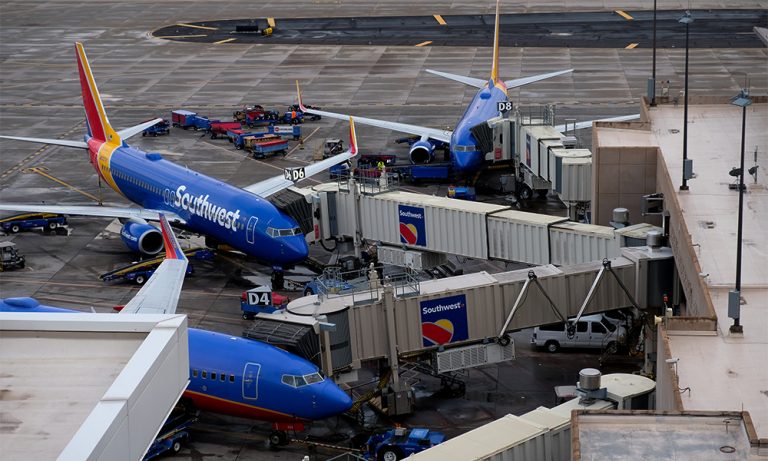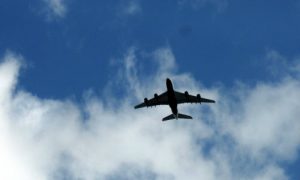The airline industry creates 11.3 million direct jobs and contributes $961.3 billion to the global GDP. The industry as a whole is a big economic driver for countries all around the world, especially those that have a substantial tourism industry. However, COVID-19 became the biggest threat to airlines in 2020.
2019 saw 4.5 billion people fly around the globe. 2020 changed that. When the COVID-19 pandemic spread globally, airlines had to reduce seat capacity by 50%. Furthermore, nations began implementing lockdowns and closing their borders to travelers. As a result, only 1.8 billion people traveled by air in 2020. Global domestic passenger traffic dropped 50%. International traffic fell by 74%.
This deep decline in passenger intake led to airlines, globally, losing $370 billion; The Asia-Pacific sector lost $120 billion, Europe lost $100 billion, North America lost $88 billion, Latin America and the Caribbean lost $26 billion, the Middle East lost $22 billion, and Africa lost $14 billion.
In the U.S., the airline industry directly contributes $641 billion to the country’s GDP. Foreign tourists that come by air contribute a further $138 billion. In total, the nation receives $779 billion thanks to this industry, a substantial amount.
In 2019, U.S. airlines carried 925.5 million passengers. However, 2020 was an entirely different story. When COVID-19 began to circulate across the globe, U.S. airlines saw a dramatic drop in passengers; there was a 96% drop in passenger intake from 2019. On April 13, 2019, the Transportation Security Administration (TSA) recorded that 2,208,688 passengers went through its checkpoints. On the same day in 2020, the TSA recorded that only 87,534 passengers went through security. Passenger intake wasn’t the only factor affected by COVID-19. According to BloombergQuint, around 400,000 airline workers worldwide have been fired, furloughed or told they may lose their jobs due to the coronavirus; 130,000 airline jobs were lost in North America alone.
The airline industry is complex, with twists and turns that can easily confuse. However, there are ways to circumvent that confusion. Business reporting can be easily grasped through several means. Here’s how to improve your reporting on the business of aviation.
One clear way of breaking through the noise is focusing on what you want to find out. What are airlines’ plans to overcome the COVID-19 challenge? Are airline workers given a clear path to help? Is there a discrepancy between what corporate wants financially and what basic employees want financially? What government aid is being given? Are airlines utilizing government aid responsibly? Having singular focus, while sounding cliché, is truly helpful. Once a central focus is ascertained, the report can branch out into related topics.
Also, data is an invaluable tool for reporting on this multi-billion dollar industry. Financial information from years past can come in handy when reporting on the financial situation of today. Some sources that are central to this article contained vital information that was public and easily accessible. The International Air Transport Association publishes reports on the industry yearly, with topics ranging from the economic impact of aviation to future predictions. A nation’s various agencies can also strengthen stories focused on aviation. The U.S. Bureau of Transportation Statistics has yearly and monthly data statistics that clearly convey industry trends. Furthermore, the Transportation Security Administration also has detailed daily, monthly, and yearly data that can be utilized. National transportation agencies aren’t your only tool, however. The International Civil Aviation Organization, a branch of the United Nations, also contains lengthy, detailed reports of global airline industry trends and breaks down passenger, freight, and mail revenue down for each country. To add on, each airline has a quarterly report that can be used.
Data, while important and beneficial, can’t be the only thing in the story. An anecdote from those on the ground is also essential. Seeing the perspectives of employees in the terminal, on the tarmac, in corporate offices, in the plane, will shed light on a situation. Comparing first-hand testimony to data and statistics will show reality. If there are discrepancies between data and anecdotes, you will need to get to the bottom of it and see why there are differences. Data, for most of the time, can’t lie, but it’s a different story when those experiencing it have something different to state.
The airline industry is going through major changes due to this pandemic. However, the job of reporting on it hasn’t changed too much. It’s still important to get the facts right, to compare information from different sources, and see how the industry is personally affecting the populace and the economy.
If you want to have a more detailed look into the airline business, peruse the infographic below. Sources used are underlined.











